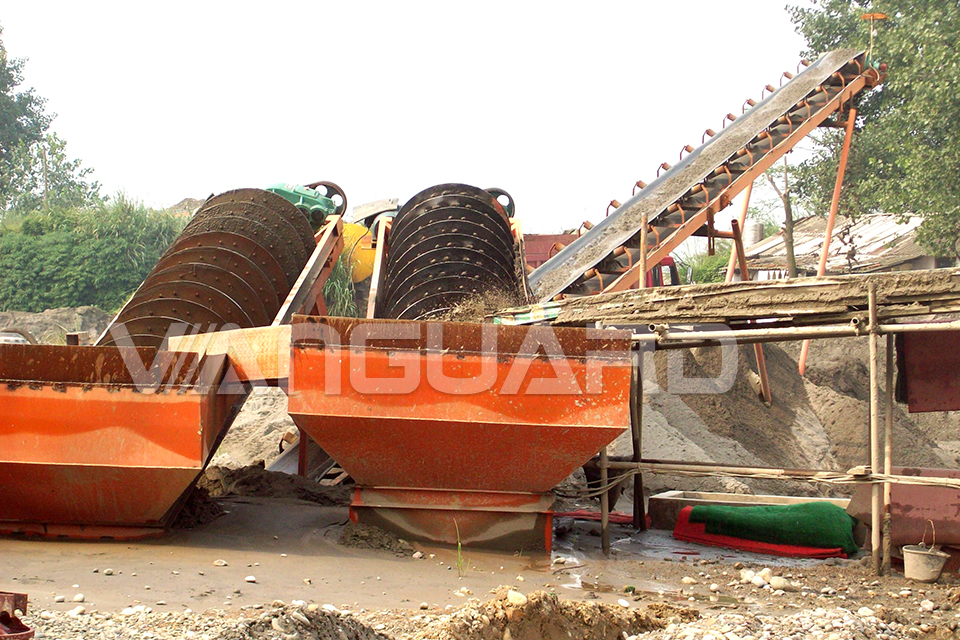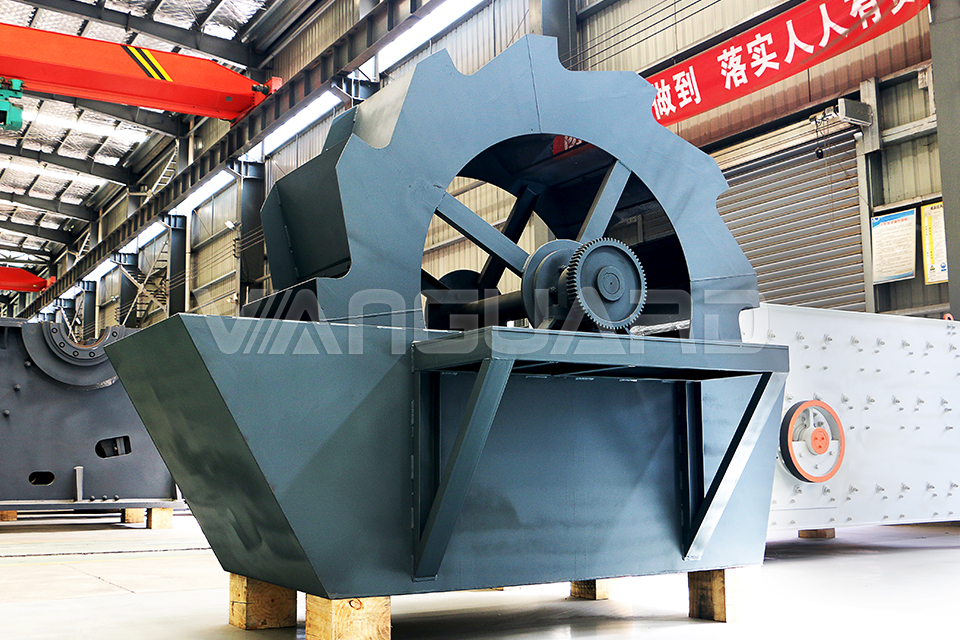There is Serious Sand Loss in the Sand Washing Production Line. How to Remedy it?
Date:2024-05-17As we all know, among the reasonable and environmentally friendly configuration methods of the entire sand making production line, it is a popular trend to equip pulse dust collector and water-washed sand washing machine. In the wastewater of wet sand washing, fine and powdered sand is inevitably lost in the water flow. Each production line loses about 5%-25% of the content. Calculating the loss in a year is also very alarming. If these lost parts are collected back, this part of the profit will also be very considerable. This article shares four methods of fine sand recycling.
Sand washing machine classification
Sand washing machines are divided into wheel sand washing machine and spiral sand washing machine. Wheel sand washing machine is widely used for washing and classifying materials in mining, building materials, chemical industry, transportation, concrete mixing stations and other fields. The sand washing process is a circular motion. Spiral sand washing equipment uses the propelling action of spiral blades to clean soil. Compared with wheel sand washing machines, spiral sand washing machines have a higher cleaning efficiency and better cleaning effects on stones. In the same way, the different specific gravity of sand, mud, and water are used to extract the sand, and the water and mud flow away along the chute.
However, no matter which type of sand washing machine is used, in the process of stirring the water source, most of the sand will inevitably be picked up, and the separation will not be clear and it will flow away along the sink. Then it inevitably caused most of the losses.
Four methods of fine sand recycling
1. Multi-stage sedimentation tank sedimentation method
The sand washing wastewater flows into the sedimentation tank, which is preferably equipped with 3 layers. It will settle layer by layer over time. Since the specific gravity of sand and mud is relatively heavy, they can be separated after a relatively long time.
Of course, this method also has disadvantages. The long-term sedimentation process takes up a large area of the sedimentation tank. In the later stage, manual excavation of sedimented sand and sedimentary mud is required, which consumes lots of time and manpower.
2. Equipped with dewatering screen equipment
Discharge the sand washing wastewater directly onto the linear dewatering screen surface to recover the lost sand.
The disadvantage is that if the raw material contains little or no mud, there will be no problem. However, if it contains too much mud, the last step will be useless and the recycling effect will not be achieved at all. What is recycled is still a mixture of sediment and sand.
3. Fine sand recycling machine device recovery
Drain the sand washing wastewater directly into the lower water tank of the fine sand collector. Use a slurry pump to pump the mixed sand and mud water to the cyclone separator and then discharge it to the screen surface. The fine sand part is discharged along with the screen surface, and the mud and water flow back to the sewer tank, forming a cycle to continuously extract sand from the wastewater.
No other faulty or theoretical problems have been found yet, and this fine sand recycling device is relatively recognized on the market.
Two points should be paid attention to when operating the fine recycling machine: first, do not feed materials when starting up. It is recommended to feed materials after idling for a few turns. This is more reasonable and can also reduce the burden on the equipment; Second, the overall power must be taken into consideration when configuring the transformer. Configure more voltage appropriately to ensure that the equipment can work normally and will not operate at low voltage.
4. Add chemicals
Discharge the lost sand water into the sinking tank, and add a chemical agent that can cause the mud and sand to quickly condense into floc, thereby achieving rapid separation of sand, mud and water. However, this method is mostly used in the coal slime industry to recycle clean and fine coal. Its use in sand and gravel quarries has certain limitations and cannot be popularized for the time being.



